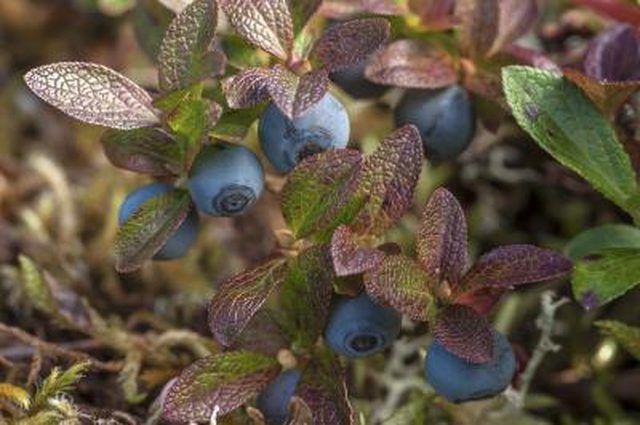Bulbs
Flower Basics
Flower Beds & Specialty Gardens
Flower Garden
Garden Furniture
Garden Gnomes
Garden Seeds
Garden Sheds
Garden Statues
Garden Tools & Supplies
Gardening Basics
Green & Organic
Groundcovers & Vines
Growing Annuals
Growing Basil
Growing Beans
Growing Berries
Growing Blueberries
Growing Cactus
Growing Corn
Growing Cotton
Growing Edibles
Growing Flowers
Growing Garlic
Growing Grapes
Growing Grass
Growing Herbs
Growing Jasmine
Growing Mint
Growing Mushrooms
Orchids
Growing Peanuts
Growing Perennials
Growing Plants
Growing Rosemary
Growing Roses
Growing Strawberries
Growing Sunflowers
Growing Thyme
Growing Tomatoes
Growing Tulips
Growing Vegetables
Herb Basics
Herb Garden
Indoor Growing
Landscaping Basics
Landscaping Patios
Landscaping Plants
Landscaping Shrubs
Landscaping Trees
Landscaping Walks & Pathways
Lawn Basics
Lawn Maintenance
Lawn Mowers
Lawn Ornaments
Lawn Planting
Lawn Tools
Outdoor Growing
Overall Landscape Planning
Pests, Weeds & Problems
Plant Basics
Rock Garden
Rose Garden
Shrubs
Soil
Specialty Gardens
Trees
Vegetable Garden
Yard Maintenance
Michigan Wild Berry Plant Identification
Michigan Wild Berry Plant Identification. Michigan has one of the best temperate zones for growing fruit. While the majority of the fruit grown in Michigan comes from small farm or commercial growers, there are lots of other places to get fruit. Wild berries grow near woods and streams and have a delicious taste.
Michigan has one of the best temperate zones for growing fruit. While the majority of the fruit grown in Michigan comes from small farm or commercial growers, there are lots of other places to get fruit. Wild berries grow near woods and streams and have a delicious taste.
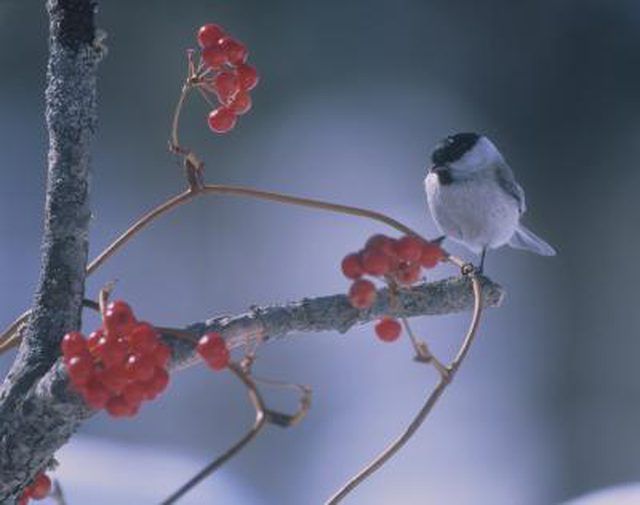
Wild raspberries are one of the tastiest fruits to stumble across in the woods. They may be tasty, but you'll need to watch out for the pricklies. Wild raspberries have a super flavor, but you can get scratched picking them.
The wild raspberry bush will grow to be 20 to 28 inches tall. The plant has skinny stems that will grow together to form a loose bush. The leaves are medium green in color and symmetrical, with ian oval shape and a point on the end.
Wild raspberries will begin to ripen in late June if it is a hot, dry summer. Berries will keep blooming until July or August, depending on the weather. The berries are red, with many small orbs to form the whole berry.
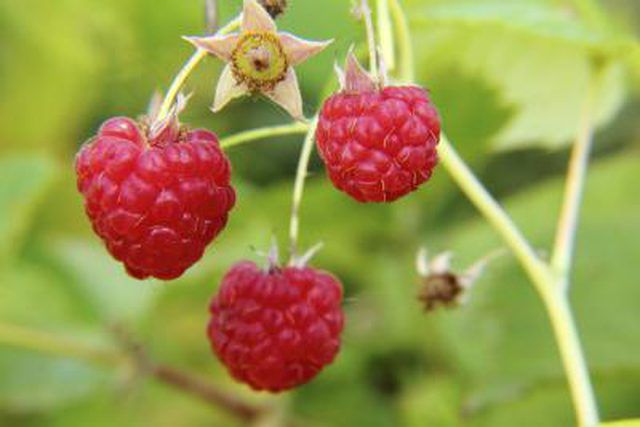
There are two kinds of blueberries in Michigan: the lowbush and the highbush. Highbush are what commercial farms grow, while lowbush grow in the wild. Lowbush planted in gardens and fields lose their "wild" flavor.
Lowbush blueberries are short, usually only reaching 18 to 24 inches tall. The leaves are light green, often tinged with red or dark brown spots. The leaves are oval-shaped with smooth edges.
Lowbush blueberries will ripen in July and August. The berries will be small, with smooth dark blue skin. They will grow in clusters at the end of each branch or stem on a bush.
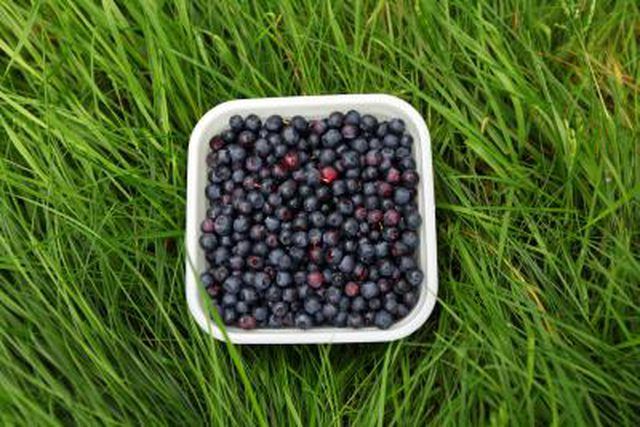
The berries on a wild black currant bush are usually semi-sweet. The berries are small, black and have smooth skin over the entire berry. Black currant berries grow in clusters on a small bush.
The wild black currant bush stands between three and four feet tall. The bush will grow dark green leaves scattered across the bush. The leaves are between one and three inches long and may have dark spots.
In the spring, wild black currant bushes will have white flowers on the ends of the branches that turn in to the fruit. The fruit will ripen during the mid to late summer months. Bushes grow in the woods, along weedy and overgrown paths and along fields.
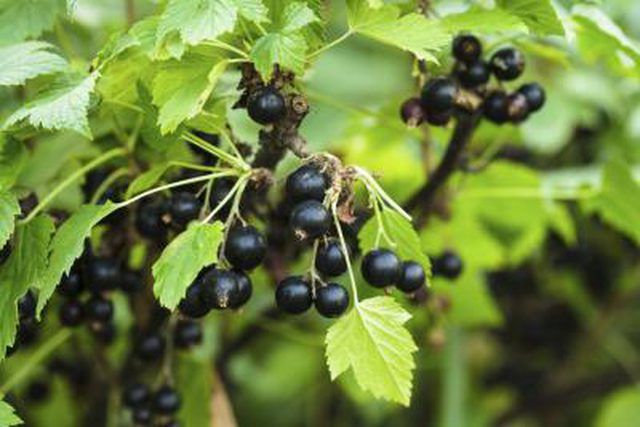
Black chokeberry plants like to grow in partially shady areas that remain damp during the summer. The best place to search for black chokeberry bushes are in or near a swamp, on the edge of a marsh or even near the banks of a small body of water.
A chokeberry bush has long, medium green leaves that are symmetrical. The leaves are slightly oval, with points on the end. The chokeberries will grow out from the center of the leaf clusters and turn a dark red color when ripe.
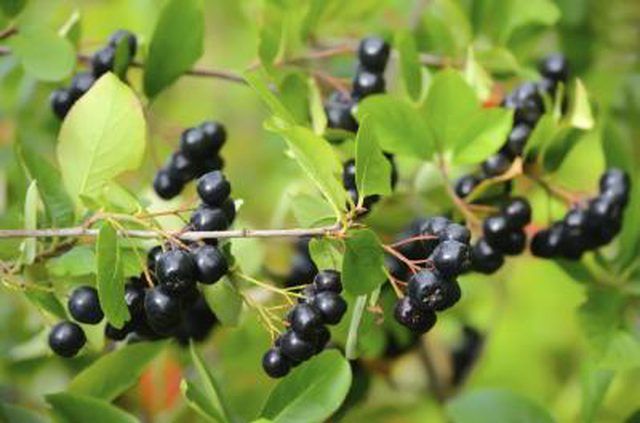
There are few dangers to be aware of when you go out looking for wild berries in Michigan, but they are present nonetheless. Never eat something unless you are absolutely sure it is safe. Guessing what type of berry you picked is okay to do when you put it in a bucket and bring home for further review. Guessing before you put it in your mouth and ingesting it is another. Be safe and 100-percent sure what type of wild berry it is before you eat it.
Also, scour the area where the berry vines are growing to make sure another vine isn't growing nearby like poison oak or a nasty plant called poison ivy. Wild berries and poisonous plants seem to grow together, so beware before you venture out. Wear long pants and protect your hands from whatever you touch with gloves.
